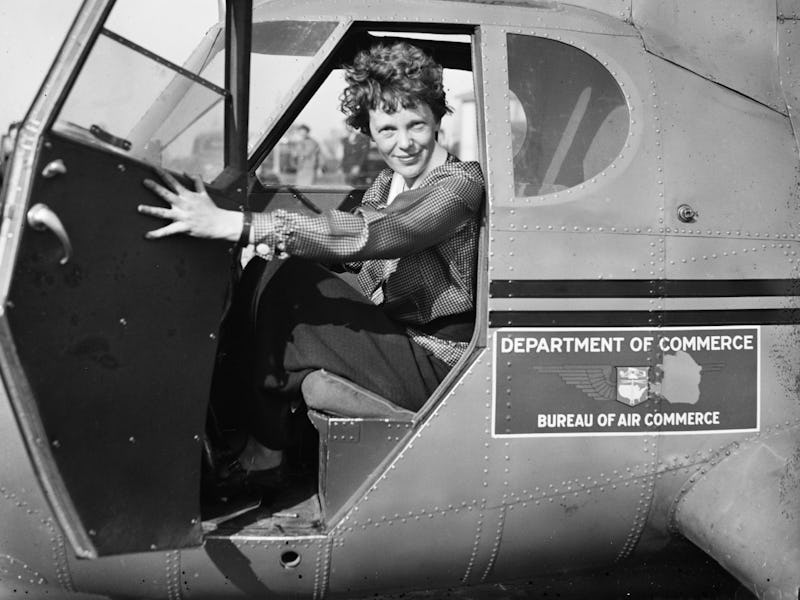Yet Another Scientist Says He's Figured Out Where Amelia Earhart Died
Is he right this time?

Ever since Amelia Earhart and Fred Noonan disappeared in 1937, the American public has wondered where the aviators ended up. Researchers and historians haven’t had much evidence to work with, so their investigations have only raised more questions. But now, University of Tennessee Knoxville forensic anthropologist Richard Jantz, Ph.D., says he’s got the answer.
In Jantz’s new paper, published this week in the journal Forensic Anthropology, he provides evidence that human remains found on an island in the western Pacific Ocean most likely belonged to Earhart.
Jantz’s paper examines the evidence of human remains found on Nikumaroro, a small island that he and others believe to be the final resting place of Earhart and Noonan. In 1940, physician D.W. Hoodless measured seven bones found on Nikumaroro and determined they belonged to a man. Jantz disagrees.
“When Hoodless conducted his analysis, forensic osteology was not yet a well-developed discipline,” he writes in the paper.
Jantz cites a photograph of Earhart that was used to estimate the lengths of her radius and humerus bones.
In the decades since Earhart and Noonan’s Lockheed Electra 10E crashed over the Pacific Ocean during their attempt to circumnavigate the globe, their mysterious end has captivated the imagination, but to Jantz’s point, only recently have we developed the tools to reliably analyze the scant evidence we have. Nevertheless, every year or two, someone has claimed to have an answer, but most of these claims lack sufficient evidence. Hoodless and his early theories, suggests Jantz, are just one example.
“Evaluating his methods with reference to modern data and methods suggests that they were inadequate to his task; this is particularly the case with his sexing method,” he writes. “Therefore his sex assessment of the Nikumaroro bones cannot be assumed to be correct.”
To clear up the picture, Jantz threw out Hoodless’s analysis in favor of his own method that compares Earhart’s physical dimensions to the measurements Hoodless took nearly 70 years ago.
Unfortunately, most people never get their bones measured while they’re alive, and for Earhart, the picture is even fuzzier, as her driver’s license and pilot’s license list her height differently. To get over this hurdle, Jeff Glickman of Photek used a photo of Earhart that also shows objects whose dimensions can be measured: an oil can. With estimates of Earhart’s lower arm length — including her tibia and humerus bones — Jantz was able to use U.S. military measurement data to extrapolate how long her tibia was.
1. Howland Island, where Earhart was trying to reach. 2. Jaluit Atoll, around which a documentary claims she crashed. 3. Gardner Island (Nikumaroro), where TIGHAR and Jantz claim she crashed.
Jantz took these measurements and performed two separate comparisons. First, he compared them to 2,776 other known measurements of human bones in a forensic database, and then he compared the bones from Nikumaroro to the database. “The Nikumaroro bones are at least 84 times more likely to belong to Amelia Earhart than to a random individual who ended up on the island,” he writes.
If history is any indication, other forensic anthropologists will likely challenge these findings. Jantz has advised The International Group for Historic Aircraft Recovery, or TIGHAR, a group that previously touted the Nikumaroro hypothesis with non-peer-reviewed research. When that story came out, multiple forensic anthropologists questioned whether a photograph could ever be appropriate evidence. So as nice as it would be to put this mystery to rest, we’ll probably see similar criticisms arrive later this week.